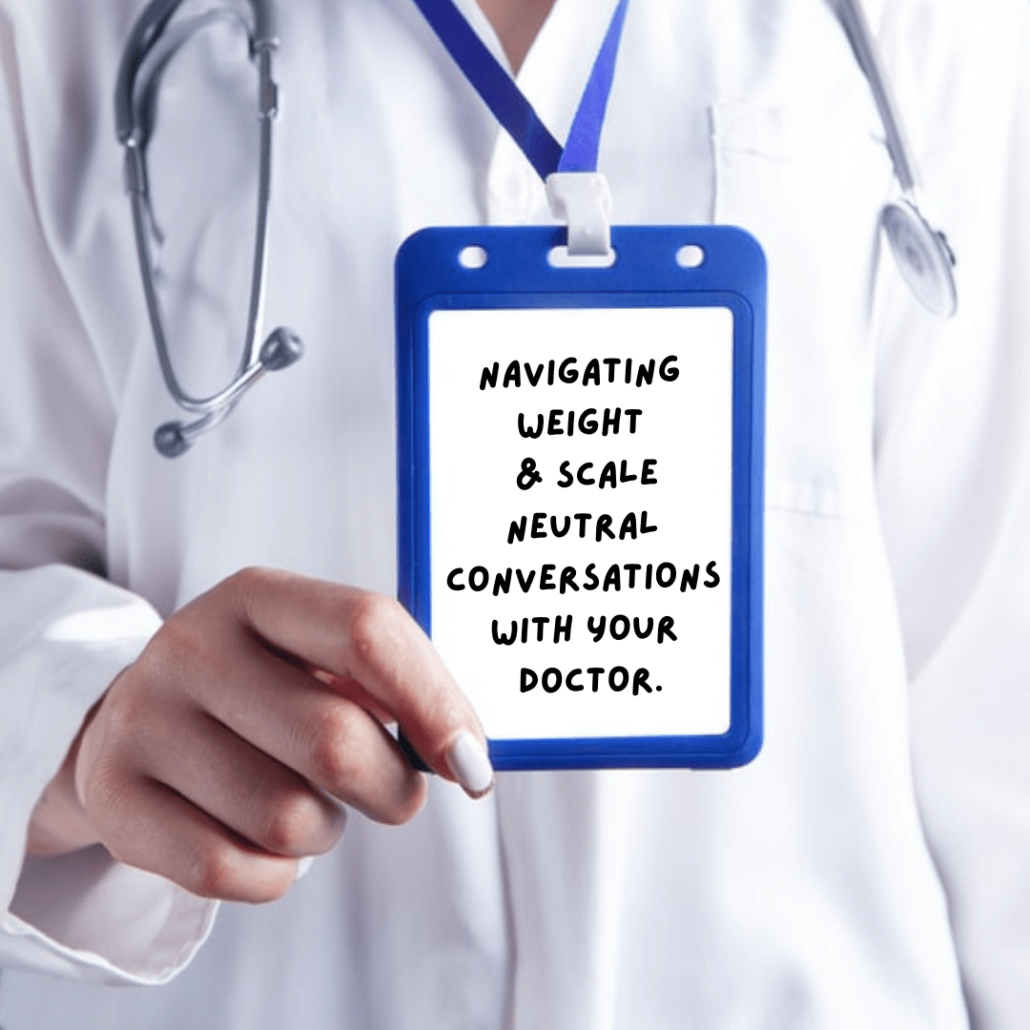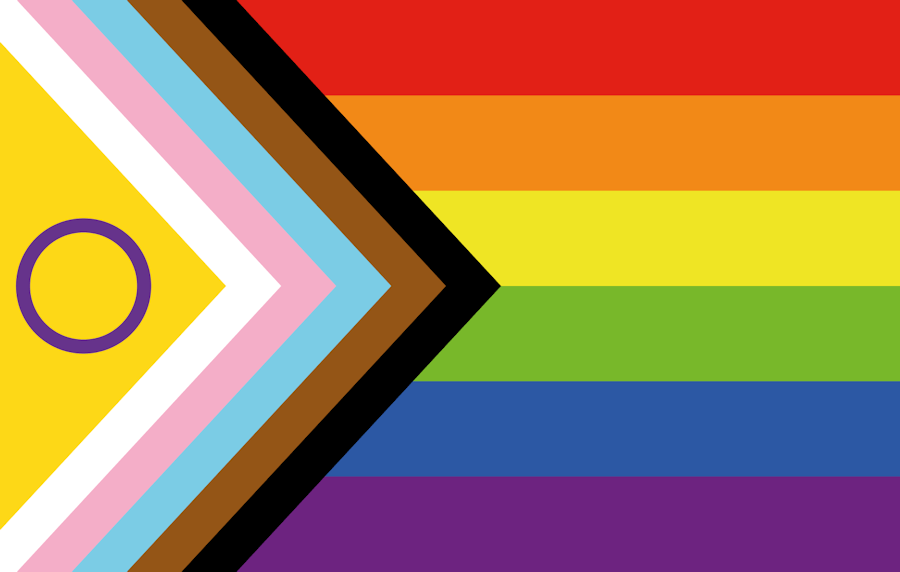
Navigating Weight & Scale-Neutral Conversations With Your Doctor
Navigating Weight & Scale-Neutral Conversations With Your Doctor by Sara Remus, MEDA Social Media Manager
While the concept of Health at Every Size (HAES) is slowly making its way into the medical field, finding HAES practitioners remains a struggle. While they do exist, they are still few and far between. That makes it all the more important to know how to advocate for yourself when moving through the health care system, especially as it is very likely that many of your providers will not be HAES informed. In Massachusetts, there are just 14 healthcare practitioners on the official HAES registry.
This doesn’t mean that your provider may not share HAES values. It does mean that you should be prepared to champion your needs when visiting your doctor, and that goes well beyond your physical health. We’ve compiled some tips to help you guide your interactions with your health care team to a place that is safe for your body and mental well-being. Read on for some ideas for having a weight and/or scale neutral conversation with your doctor.
 If you have the opportunity to communicate with your provider through a digital platform, use it to start the conversation.
If you have the opportunity to communicate with your provider through a digital platform, use it to start the conversation.
Many health care facilities use secure digital patient portals to schedule appointments, provide test results, and offer payment options. This can also be a great resource for setting expectations when you request an appointment with your provider. Usually, these programs will give you the ability to submit a note when requesting to see your doctor. You can disclose as much or as little as you feel comfortable with. This is an example of how you could potentially make the request:
“Hello, I’m looking for an appointment to be seen for (insert issue and any details here). Please add a note in my request that I would like for this appointment to not involve any discussions around weight, and would prefer to not be weighed. If I must be weighed, due to something like medication whose dose is weight dependent, I request that the nurse and doctor allow me to be weighed with my back to the scale and not share any of my weight information with me.”
If you are comfortable doing so, you can share that you are recovering from an eating disorder, and that these sorts of conversations and having information about your weight tends to be triggering and not helpful in your recovery process. However, you are certainly not obligated to provide this information!
If there is not a patient portal available for communicating with your doctor’s office, you can also offer this information over the phone. If you’re not comfy doing so, you could also draft a hand-written or typed note that you can fax to the office ahead of time or hand deliver to any medical personnel when you arrive for your first appointment. You might find it handy to keep several copies of this note in your wallet or bag, so that you can hand it to a provider in a pinch. If, for example, should you end up in an emergency or last-minute situation where there isn’t time for the conversation to be had ahead of time.
If you have a behavioral health provider, ask them for help.
If you have a counselor, therapist, or social worker that is helping you through your recovery, ask them for advice in navigating your specific needs with a medical doctor. In many cases, your behavioral health provider will be happy to communicate with your doctor directly, with your written permission to do so. These communications typically happen over the phone or hrough a secure platform. You can ask to see what is being communicated between your providers (or not!). Your counselor, therapist or social worker can handle discussions with your provider that you may not feel comfortable having.
If you feel you are being diagnosed incorrectly due to your size, be vocal.
It is a sad truth that some health care practitioners blame weight as the culprit for illness or injury before investigating and addressing other potential causes. We know that weight is usually not the cause of problems that typically lead us to visit our doctor.
If you feel that your doctor is attributing your pain or condition(s) to your weight, try asking them the following questions:
- “If weight were not a factor, how would you go about treating me?”
- “Would you give the same advice to someone who was in a thin body?”
- “It is important to me that we look at all the potential causes for why I am experiencing these symptoms. Can you think of any other causes aside from my weight?”
If they insist that the issue is weight related and refuse to talk to you about any other potential causes, you can request to see a different provider. Having these sorts of conversations with your doctor can be quite uncomfortable, so if you decide not to push back on your provider, walk away from this appointment without answers and go elsewhere, that is completely understandable. It is important to remember that you are entitled to look for other doctors. When looking for a new provider, make sure to ask if they’re willing to have a weight-neutral discussion.
Lastly, if you have ever worked with a specialist for an eating disorder, they can be a great resource in helping you find educated medical practitioners suited to provide you with quality care that doesn’t revolve around weight. You may also find that asking around in your recovery group is a great way to find a doctor you can trust. Don’t be afraid to advocate for yourself. If that sounds a little scary, remember that it’s OK to lean on others for support!




 that losing weight is a panacea. Diet culture suggests that in order to be loved, accepted, successful, and happy you have to be thin.
that losing weight is a panacea. Diet culture suggests that in order to be loved, accepted, successful, and happy you have to be thin. The fairy tale princesses and character’s we grew up with have had an undeniably damaging effect on the expectations we set for our bodies. We grew up dressing like these characters for Halloween and pretending to be them in our imaginary games. What did we learn from these characters; that our looks are more important than our intelligence, that we need attractive bodies to have good lives? These narratives do not serve us. We need new narratives that take the good pieces from the classic stories we grew up with and then shift the focus from our bodies as a tool for power and security to our kindness as a tool for growth and happiness.
The fairy tale princesses and character’s we grew up with have had an undeniably damaging effect on the expectations we set for our bodies. We grew up dressing like these characters for Halloween and pretending to be them in our imaginary games. What did we learn from these characters; that our looks are more important than our intelligence, that we need attractive bodies to have good lives? These narratives do not serve us. We need new narratives that take the good pieces from the classic stories we grew up with and then shift the focus from our bodies as a tool for power and security to our kindness as a tool for growth and happiness.



